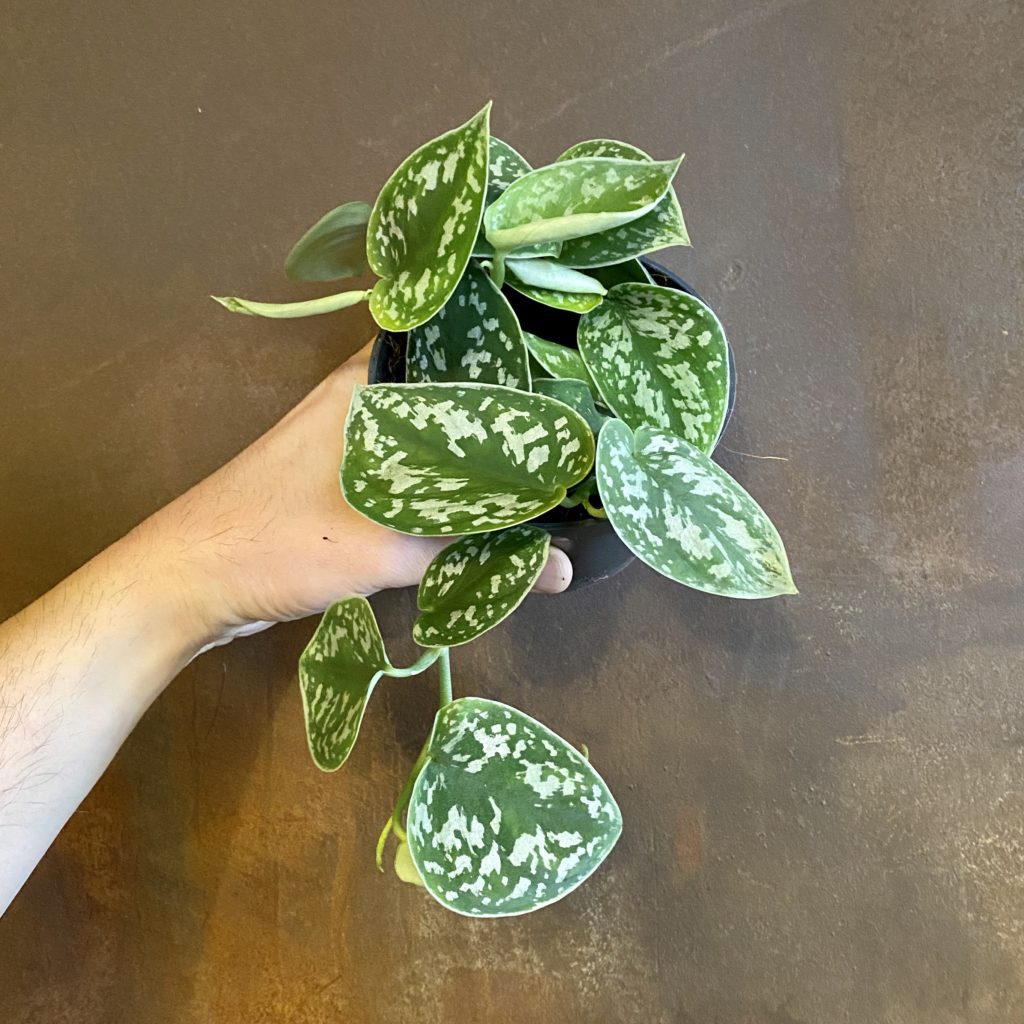Scindapsus Pictus Plant

Botanical Name: Scindapsus pictus ‘Argyraeus.’
Scindapsus Pictus is just as easy to grow as its relative, golden pothos (Epipremnum aureum). Keep it warm and take care not to overwater this house plant.
Cold drafts and soggy soil are two things it won’t tolerate.
You’ll see the best leaf color and variegation by keeping it in bright, indirect light. You’ll also keep the plant healthy by boosting the humidity around it.
In fact, its variegated foliage makes Scindapsus Pictus a beautiful addition to a terrarium.
This striking tropical plant is relatively new to house plant nurseries and is garnering a lot of attention.
Big, heart-shaped leaves are dark-green and splashed with silvery gray, giving them a satin sheen.
Pruning tip
Your plant will benefit from occasional pruning; it helps to branch out and become fuller.
Spring is the best time to cut it back.
Use sharp pruners to avoid tearing the stems—gyraeus’ a beautiful hanging basket plant.
Repot in spring
Once the plant outgrows its pot, transfer it to a pot only 1-2 inches larger; hence a much bigger container will contain water in excess.
It’s a smart idea to use a pot with drain holes. Should you chose to use a cachepot (decorative container with no drain holes), put a plain nursery container in the cachepot.
Putting pebbles in the bottom of cachepots keeps the inner pot above the drain water.
Scindapsus pictus problems usually appear in its leaves.
Brown leaf tips are the result of dry air.
Yellow leaves are the result of too much water.
Brown spots surrounded by yellow halos indicate bacterial leaf spots. Remove affected leaves. Make sure not to get the leaves moist when watering.
Satin Pothos Care Tips
Origin: Southeast Asia
Height: Reach to 3 ft (90 cm) or even more. It is possible to cut the stems back to the desired length if you prefer a smaller houseplant.
Light: Provide Scindapsus pictus bright, non-direct light during the whole year. Too much direct sunlight will burn its leaves, while low light will make the leaves shed their variegation.
Water: Water good and let the top inch of ground dry out between waterings. Hold soil scarcely moist during winter. Yellow leaves are the aftermath of overwatering. Regularly use room-temperature water for watering houseplants and provide proper draining.
Humidity: Strive to keep 40-50% pertaining humidity around your plant. Have a room humidifier or a humidity tray over winter if the air gets too dry.
Temperature: Medium to warm 65-85°F/18-29°C. Don’t expose Satin Pothos to temperatures below 60°F/16°C, even for a short time, because cold air will damage this tropical plant’s foliage.
Soil: Use an all-purpose potting mix for houseplants.
Fertilizer: Nourish monthly spring through fall with a 20-10-10 water-soluble fertilizer diluted by half.
Propagation: Take 4 inch (10 cm) tip cuttings in spring or early summer and insert them into moist peat moss-based potting mix. Cuttings root easily in about a month.


























Comments are closed.